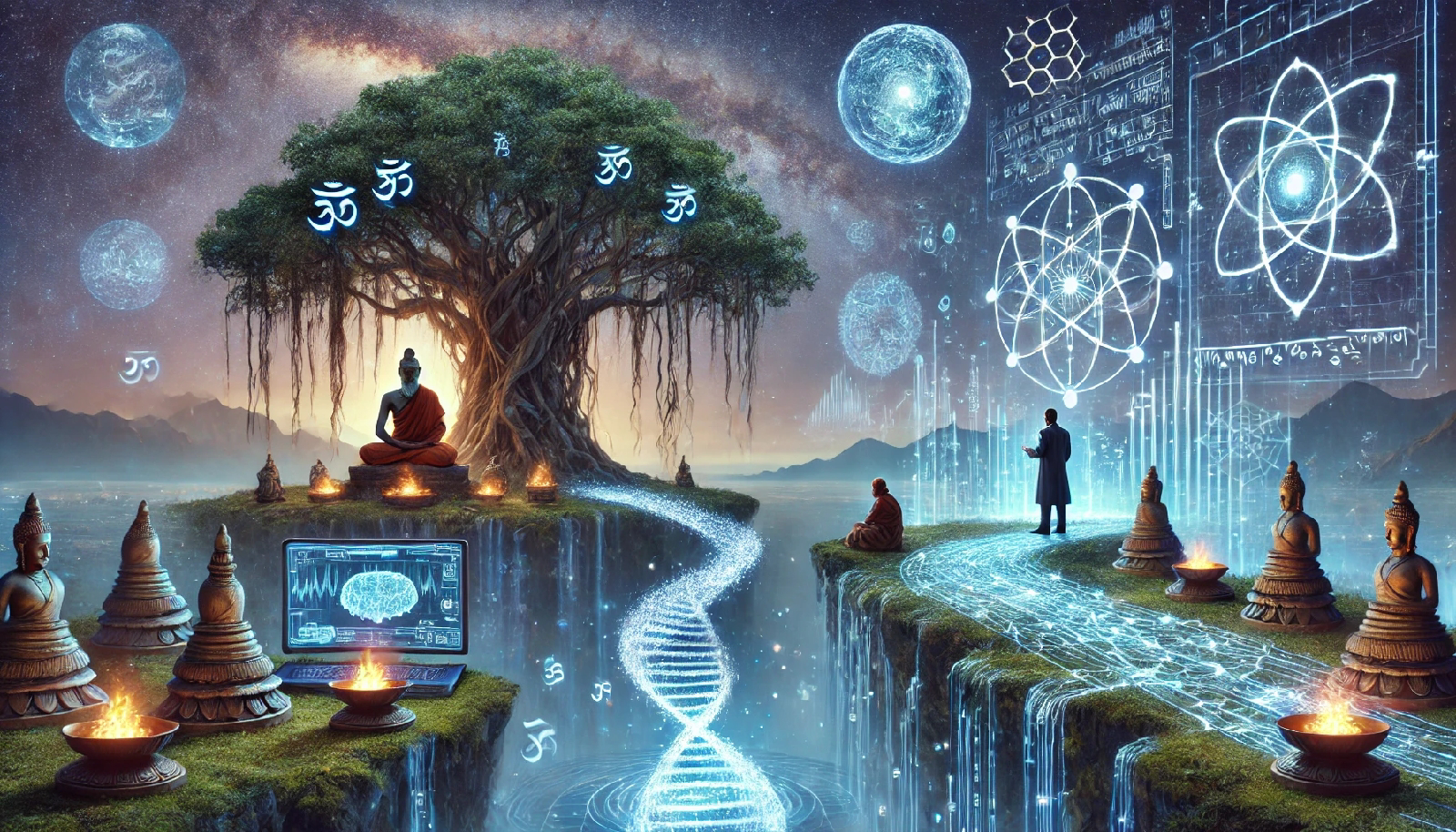Ancient Wisdom Meets Modern Science: A Timeless Dialogue
In an era driven by technological advancements and scientific breakthroughs, one might question what relevance ancient texts like the Upanishads hold for us today. Surprisingly, these profound spiritual treatises, composed thousands of years ago, resonate deeply with modern science, offering insights that transcend time and culture. This Thought Spark aims to ignite a conversation about how ancient wisdom and modern science can enrich one another and inspire a deeper understanding of our existence.
---
The Upanishads: A Map of Consciousness
The Upanishads, often referred to as the essence of the Vedas, delve into the nature of reality, consciousness, and the self. Among these texts, the Mandukya Upanishad stands out for its exploration of the four states of consciousness:
Waking (Jagrat): Our conscious engagement with the external world.
Dreaming (Svapna): The inner world of thoughts and imagination.
Deep Sleep (Susupti): A state of restful awareness devoid of distinctions.
Turiya: The fourth state, transcending all, representing pure awareness and ultimate reality.
Doesn't this framework remind us of modern neuroscience's study of brainwave patterns, REM sleep, and states of consciousness? While the Upanishads articulate these states metaphorically, their underlying principles align remarkably with scientific inquiry into the mind.
---
Convergence of Ancient and Modern Perspectives
The wisdom of the Upanishads may use a different language, but its principles parallel many modern scientific discoveries. Consider these examples:
1. Non-Duality and Quantum Physics:
The Upanishads declare, “Tat Tvam Asi” (“You are That”), emphasizing the unity of the self (Atman) with the ultimate reality (Brahman). Similarly, quantum physics reveals a universe where particles are interconnected in ways that challenge our perception of separateness.
2. Consciousness Studies:
Modern neuroscience is beginning to explore the layers of consciousness through brain imaging and cognitive studies. The Upanishads mapped these layers centuries ago, focusing not on tools but on introspection and meditation as a means to self-realization.
3. Energy and Matter:
The Upanishads describe the universe as an interplay of subtle energies (Prana). Modern physics echoes this in its understanding of energy as the foundation of all matter.
---
What Can We Learn from This Dialogue?
The intersection of ancient wisdom and modern science is not about choosing one over the other but about bridging perspectives to uncover deeper truths. The Upanishads remind us of the value of inward exploration, encouraging us to ask questions like:
What is the nature of reality?
Who am I beyond my thoughts, emotions, and body?
How can understanding consciousness lead to a more fulfilled life?
Similarly, modern science pushes us to expand our boundaries of understanding through empirical observation and experimentation.
---
A Call to Reflect and Reimagine
As we grapple with the complexities of the 21st century—ranging from AI ethics to mental health crises—perhaps it is time to revisit the timeless wisdom of the Upanishads. What if we could integrate their insights into the frameworks of science, education, and technology? Imagine a world where ancient spiritual principles guide the ethical development of artificial intelligence or where meditation complements therapy in healing trauma.
This is not about merging traditions blindly but about fostering a dialogue where the depth of ancient wisdom complements the rigor of modern science.
---
Your Turn to Join the Conversation
Have you encountered parallels between ancient texts and modern scientific ideas?
How can we use this synthesis to navigate the challenges of modern life?
Share your thoughts, insights, and questions. Together, let’s explore the synergy of these two powerful ways of knowing and create a future rooted in wisdom and awareness.
---
By framing the Upanishads as timeless guides that speak to our modern challenges, this blog aims to spark curiosity, reflection, and dialogue. What do you think?




Comments
Post a Comment